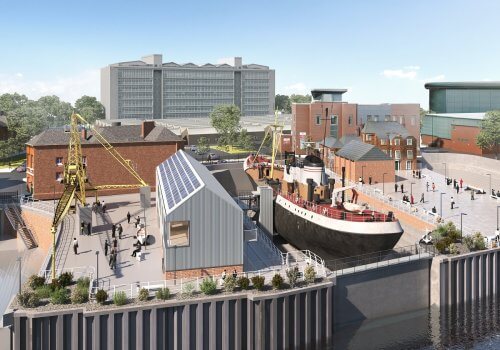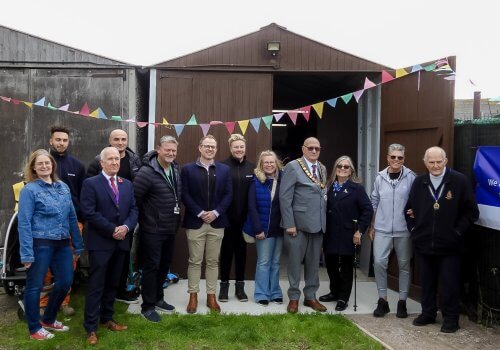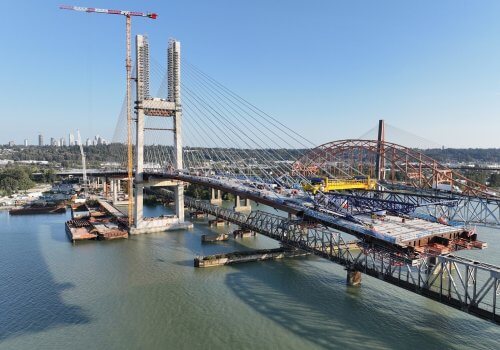A project delivered by Spencer Group to safeguard the structural integrity of the iconic Humber Bridge has won a prestigious award.
The £4m project to replace critical parts of the landmark crossing was recognised at the Institution of Civil Engineers (ICE) annual Yorkshire and Humber Awards.
The team behind the project to replace load-bearing “A-frames”, which connect the main span bridge deck to the towers at either end of the bridge, and carry out associated strengthening work, took the Smeaton Award for projects worth between £500,000 and £5m.
The awards judges hailed the project as “innovative” in addressing the many technical challenges involved in both the design and construction solution.
The full citation read:
“Successfully overcoming technical challenges in the critical elements of this iconic structure made this project stand out. The innovative approach to the design of the A-frames, accommodating the large forces involved and the bridge’s movement, impressed the judges. The construction was equally complex, with the difficulties of replacing the A-frames while the bridge was moving, in use, and while working in extremely cramped areas.”
The award was presented to representatives of the Humber Bridge Board, Spencer and leading international engineering consultancy Arup, which developed the design solution, by ICE President Professor David Balmforth at the organisation’s regional gala dinner and awards ceremony in Harrogate.
The four solid steel A-frames were sited below the bridge’s 1,410-metre main span. They had to be replaced because the A-frame bearings, which allow them to move as the bridge contracts and expands due to the weather and traffic movements, had become worn since the bridge was built 34 years ago.
Spencer carried out all the work on site, working with supply chain partners, and designed and installed temporary “pendles” – load-bearing arms – to support the carriageway prior to transfer to permanent supports.
The A-frames and bearings have now been replaced by a more robust system of pendles and “wind shoes”, which absorb wind loading on the bridge deck and reduce the associated loads on the new bearing system. With the main works now carried out, the project is nearing completion.
Spencer’s Project Manager for the contract, Daniel Smith, said: “This project has gone from one technical hurdle to another, with each stage involving technical and engineering challenges.
“It’s been very much a team effort, with lots of ideas coming forward from within the Spencer team, including Merv Booth & Joe Bennett, for addressing the many complex issues this project posed. People within the team have come up ways to work efficiently and cost-effectively to deliver the best possible results.
“We have also had a very positive, collaborative relationship with Arup throughout the project.”
Spencer Technical Director Nick Cooper said: “This project required the ability to integrate different disciplines, from hydraulics, to mechanics, to structures, while working in a very confined space.
“Arup brought to the team the concept, ideas and some of the design, while Spencer brought the ability to take those concepts and designs and add additional detail to them to facilitate delivering the job.
“With a project such as this there can be no room for error. You have to understand exactly how you are going to do it and also all the permutations of things that could go wrong while you’re doing it.
“Our knowledge of different disciplines and our ability to do the detailed design related to those disciplines meant that we knew exactly what the risks were so we could mitigate and remove these in order to deliver the project successfully.”
Nick added: “The delivery of this project gives the Humber Bridge security in its support bearing systems for many years ahead.
“It has removed the risk of a catastrophic failure that would have required major, unplanned works that would, inevitably, have meant a long-term closure of the bridge with all the serious consequences that would have had for the region’s transport infrastructure and economy.”
Nick praised the work of Daniel and all the team on site and also highlighted the contribution of Spencer Graduate Engineer Luke Smith, who excelled in integrating drawings and designs for the project.











